documentary chronicle
"Edited film used by an amateur travel-lecturer documents travel in western and southwestern United States beginning at a rodeo in Phillipsburg, Kansas (trick riding, lassoing jack rabbits, roping calfs, wrestling steers, horse races, bucking broncos and bucking steers as well as scenes of an airplane flyover and of an airplane crashing which possibly was a stunt) and continuing to Black Hills, South Dakota (forest scenery and ca. 1927 construction of Mount Rushmore--blasting off cliff face, scaffolding, men working and completed monument). Shown are roadside scenery, railroad tracks, men cleaning railroad tracks with hose and tank on small train car on the way to an unidentified mountain fishing camp possibly in Colorado (canoeing, fishing in stream, and a smokehouse) and a mountain farm where colts are branded. Cog railway is taken up to Pike's Peak. Travels continue to to the Southwest (unidentified southwestern town possibly Santa Fe with adobe buildings and men and children in Mexican dress singing and playing guitar, American Indian dance performance indoors possibly Zuni, parade of American Indians in unidentified city perhaps Gallup and Navajo band. Scenes of the southwest continue with Navajo in Canyon de Chelly (hogans and herding sheep), prehistoric archaeological sites (Mesa Verde, Chaco Canyon another unidentified cliff dwelling possibly Montezuma's castle) and Taos Pueblo. Film records American Indian dances at a gathering of Indian tribes possibly at Gallup, intertribal horse races and women's tug-of-war. Hopi are shown dancing at Hopi. Also shown are Indian women (possibly Apache or Navajo) and children together and children in cradleboard and the Navajo reservation (hogans, women spinning and weaving under a ramada, herds of sheep and goats and "dipping sheep"). Natural wonders of Grand Canyon, Monument Valley and Rainbow Bridge National Monument are featured.Travel continues to Yellowstone National Park, California (scenery, black bears, hot springs and geysers) and onto the California coast possibly Monterey (seals on rocks). Also shown are an unidentified town with oil pumps and derricks and people waterskiing" via the Human Film Studies Archives, Smithsonian Museum.
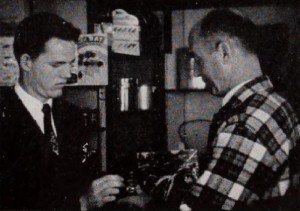
"May Day Conflict is a well executed and skillfully edited family story film of the conflict created by the opening of the trout season and a flower festival both falling on May first. The central character is a good loser (the husband, of course!), as he accompanies his wife to the flower show after elaborate preparations for his fishing trip. Herbert F. Sturdy has deftly woven into the story pattern light, humorous incidents to provide amusing comedy relief from his fine floral closeup studies. Expert camera handling and smooth transitions lend a semi-professional finish to the picture." Movie Makers, Dec. 1948, 493-494.
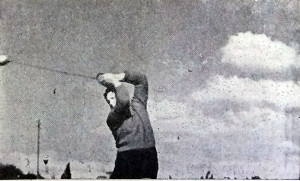
doc. didattico e scientifico/educational and scientific film
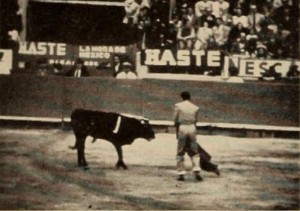
"It takes Cal Duncan 1300 feet of 16mm. color film to tell a pair of politely uninterested guests how he caught a sailfish off Acapulco — but the effort, as exemplified in Mexican Malarkey, is decidedly worth it. Mr. Duncan's running gag, climaxed by a truly comic finish right out of the funny papers, is the flashback technique developed to a high and satisfying order. His Mexican footage itself is no less effective. The robust and hearty producer has an artist's eye for fresh viewpoints, a dramatist's instinct for revealing action. His sequence on Mexico's traditional Sunday bullfight, always a difficult assignment, is outstanding. Mexican Malarkey is a refreshing variation on an increasing wellworn theme." Movie Makers, Dec. 1949, 454.
"Made by F. D. Koehler, jr., ACL, The Mississauga Canoe Trip is a fine example of what the movie maker can accomplish on a hunting trip in capturing a picture that has both good photography and an interesting story presentation. The fact that a tripod was added to the duffel did not daunt this cinematic hunter, and the result is refreshingly rock steady pictures that leave nothing to be desired. Perfect exposure, for the most part, and some excellent lighting show that the maker had an eye for the essentials of good picture making. A knowledge of what makes a good screen picture is demonstrated in the many effective closeups throughout the film. An excellent job of amateur titling is another feature that places this film in a high category for vacation films." Movie Makers, Dec. 1934, 534.
"Il film è un documentario di propaganda e vuole sopratutto essere un invito verso l’aeromodellismo. Il modello volante è oggi progettato su basi scientifiche e costruito con criteri tecnici in perfetta analogia col velivolo moderno. Il film s’inizia con una rapida rassegna dei più rudimentali velivoli coniati dalla fantasia del bambino, dall’aeroplano di carta all’aquilone, sino al giocattolo. Qui s’inizia la sequenza della scuola degli aeromodellisti e la costruzione completa di un modello a struttura reticolare con motore a fili elastici. Sul campo di volo il modello riceve il battesimo dell’aria col suo primo volo, mentre, a contrasto con le rabbiose evoluzioni dei modelli a motore, i modelli veleggiatori lanciati con cavo volteggiano leggeri e sicuri. La più alta perfezione costruttiva e la maggior finezza aerodinamica caratterizzano i grandi modelli di alianti per lancio dal pendio, che sono argomento della terza parte del film. Spontaneo è il passaggio ideale e logico dai modelli alianti al volo veleggiato, palestra di addestramento dei giovani per i futuri ardimenti dei cacciatori e bombardieri dell’aria."
"The film is a propaganda documentary and above all wants to be an invitation to model aircraft hobbyism. The model airplane is today designed on a scientific basis and built with technical criteria in perfect analogy with the modern aircraft. The film begins with a quick review of the most rudimentary aircraft coined by the child's imagination, from the paper plane to the kite, to the toy. Here begins the sequence of the model aircraft school and the complete construction of a reticular structure model with an elastic line motor. On the airfield, the model receives the baptism of the air with its first flight, while, in contrast to the furious evolutions of the motorized models, the sailplane models launched with cable fly light and safe. The highest constructive perfection and the greatest aerodynamic finesse make the large models of gliders, which are the subject of the third part of the film, suitable for launch from the slope. Spontaneous is the ideal and logical transition from glider models to soaring flight, a training ground for young people for the future feats of hunters and air bombers."—LITTORIALI DEL CINEMA ANNO XVIII program
"...che illustra il procedimento della costruzione in laboratorio dei modelli volanti, ponendo a raffronto il breve volo dei piccoli modelli con quello delle moderne pesanti macchine aeree"—I Littoriali del cinema: Un’altra interessante serie di documentari, La Stampa, September 3, 1939
"...which illustrates the process of laboratory construction of flying models, comparing the short flight of small models with that of modern heavy aerial machines."
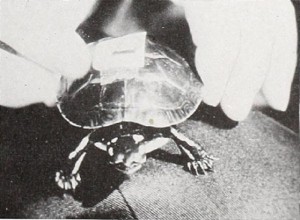
"Frank E. Gunnell has used a novel continuity motif in Mohawk Pals that ties together what otherwise would be a rambling film story. Two boys are shown doing their "homework," and the final assignment is to write a composition on vacations. The film then pictures the summer adventures at Lake Mohawk of the two boys and a girl of similar age. From time to time, there are inserted shots of the boys writing, and sentences from their compositions are cleverly double exposed at the bottom of the frame, to serve as subtitles for the film. The cinematography is immaculate, and the youngsters appear without self consciousness in their various pursuits of fun on a summer vacation." Movie Makers, Dec. 1944, 496.
"Exciting times at Southport, as racing cars hurtle around a course laid out on the sands, in this short reel by filmmaker George Jesse Turner. The town has an impressive history of motor racing - before the famous Brooklands circuit opened in 1907, cars raced each other through Southport streets, though this proved too disruptive, and the sport was wisely relocated to the town's sandy beaches." (BFI Player)
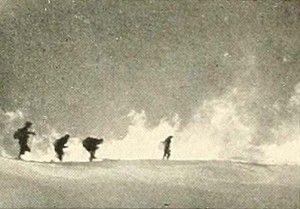
"A down mountain ski run, etched against a filtered sky and set in a world of fantastic snow shapes and incredible beauty, is the theme of Mount Zao, which was filmed on the Japanese mountain of that name. Khoji Tsukamoto has mastered the technique of back lighting the dramatic turns, stems and jumps of a down mountain run so that they are framed against luminous clouds of powdered snow. The ski runners are always preceded by an ubiquitous cameraman who has invariably chosen the most effective angle for each scene of his closely knit sequences. The result is as smooth a picture of skiing as the screen has seen. In sequencing, editing and the nuances of tempo, this film is near the top. And particularly praiseworthy is the way in which the cameraman has involved backgrounds of astonishing natural beauty with foregrounds of interest compelling action." Movie Makers, Dec. 1937, 603, 626.
Total Pages: 14